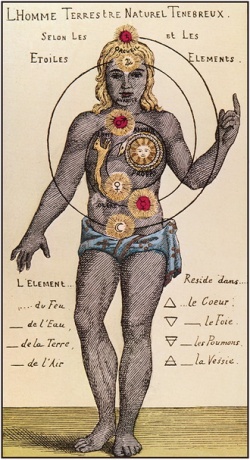Difference between revisions of "Manasikara"
Jump to navigation
Jump to search
| Line 1: | Line 1: | ||
[[File:36-0091.jpg|thumb|250px|]] | [[File:36-0091.jpg|thumb|250px|]] | ||
| − | Manasikara (Sanskrit and Pali, also | + | Manasikara (Sanskrit and Pali, also [[Manasikāra]]; Tibetan Wylie: yid la byed pa or yid byed) is a Buddhist term that is translated as "attention" or "ego-centric demanding". It is defined as the process of the mind fixating upon an object. Manasikara is identified within the Buddhist [[Abhidharma]] teachings as follows: |
| − | * One of the [[Mental factors#Seven_universal_mental_factors|''seven universal mental factors'']] in the Theravada Abhidharma. | + | * One of the [[Mental factors#Seven_universal_mental_factors|''seven universal mental factors'']] in the [[Theravada]] [[Abhidharma]]. |
| − | * One of the [[Mental factors#Five_universal_mental_factors|''five universal mental factors'']] in the Mahayana Abhidharma | + | * One of the [[Mental factors#Five_universal_mental_factors|''five universal mental factors'']] in the [[Mahayana]] [[Abhidharma]] |
==Definitions== | ==Definitions== | ||
| − | ===Theravada=== | + | ===[[Theravada]]=== |
| − | The | + | The Atthasālinī (I, Part IV, Chapter 1, 133) and the Visuddhimagga (XIV, 152) define [[Manasikāra]] as follows: |
:...It has the characteristic of driving associated states towards the object, the function of joining (yoking) associated states to the object, the manifestation of facing the object. It is included in the saṅkhārakkhandha, and should be regarded as the charioteer of associated states because it regulates the object. | :...It has the characteristic of driving associated states towards the object, the function of joining (yoking) associated states to the object, the manifestation of facing the object. It is included in the saṅkhārakkhandha, and should be regarded as the charioteer of associated states because it regulates the object. | ||
| − | ===Mahayana=== | + | ===[[Mahayana]]=== |
The [[Asanga|Abhidharma-samuccaya]] states: | The [[Asanga|Abhidharma-samuccaya]] states: | ||
:What is manasikara? It is a continuity having the function of holding the mind to what has become its reference. | :What is manasikara? It is a continuity having the function of holding the mind to what has become its reference. | ||
| − | + | Herbert Guenther states: | |
: It is a cognition that keeps the complex of mind in its specific objective reference. | : It is a cognition that keeps the complex of mind in its specific objective reference. | ||
| − | The difference between '' | + | The difference between ''cetanā'' and ''manasikara'' is that ''cetanā'' brings the mind towards the object in a general move, while ''manasikara'' makes the mind fixate upon this particular objective reference. |
{{W}} | {{W}} | ||
| Line 25: | Line 25: | ||
[[Category:Buddhist Philosophy]] | [[Category:Buddhist Philosophy]] | ||
[[Category:Theravada Buddhism]] | [[Category:Theravada Buddhism]] | ||
| + | [[Category:Buddhist psychology]] | ||
Revision as of 03:44, 22 February 2013
Manasikara (Sanskrit and Pali, also Manasikāra; Tibetan Wylie: yid la byed pa or yid byed) is a Buddhist term that is translated as "attention" or "ego-centric demanding". It is defined as the process of the mind fixating upon an object. Manasikara is identified within the Buddhist Abhidharma teachings as follows:
- One of the seven universal mental factors in the Theravada Abhidharma.
- One of the five universal mental factors in the Mahayana Abhidharma
Definitions
Theravada
The Atthasālinī (I, Part IV, Chapter 1, 133) and the Visuddhimagga (XIV, 152) define Manasikāra as follows:
- ...It has the characteristic of driving associated states towards the object, the function of joining (yoking) associated states to the object, the manifestation of facing the object. It is included in the saṅkhārakkhandha, and should be regarded as the charioteer of associated states because it regulates the object.
Mahayana
The Abhidharma-samuccaya states:
- What is manasikara? It is a continuity having the function of holding the mind to what has become its reference.
Herbert Guenther states:
- It is a cognition that keeps the complex of mind in its specific objective reference.
The difference between cetanā and manasikara is that cetanā brings the mind towards the object in a general move, while manasikara makes the mind fixate upon this particular objective reference.
